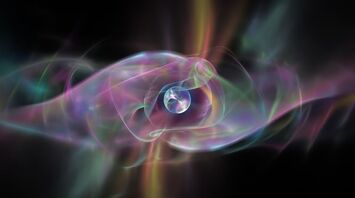Scientists Aim to Directly Observe Gravity Through Gravitons

Gravity remains the only fundamental force whose carrier, known as the graviton, has yet to be observed. However, recent research brings hope that this might soon change.
Background on Gravitons
Gravitons are the hypothetical force carriers for gravity, akin to how photons serve electromagnetism, and gluons and w and z bosons act for strong and weak nuclear forces. Despite extensive studies, gravitons have never been directly detected, causing some to question if they exist or if gravity behaves differently from other forces. If gravitons do exist, detecting them poses an extreme challenge due to their minuscule mass, estimated at around \(6 \times 10^{-32}\) electron-volts, vastly lighter than an electron.
New Research Approach
A new study by scientists from Stockholm University and Stevens Institute of Technology, published in Nature Communications, suggests a promising quantum-sensing technique inspired by Albert Einstein's photoelectric effect. This approach, called the 'gravito-phononic' effect, uses acoustic resonators to detect gravitons within passing gravitational waves. These acoustic resonators are significantly different from the Laser Interferometer Gravitational-Wave Observatory (LIGO), which has measured gravitational waves since 2015 using laser-based distance changes.
Detection Method
The proposed method involves massive aluminum cylinders, each weighing 4,000 pounds, and chilled to near absolute zero. By observing the subtle vibrations imparted by gravitational waves, these cylinders are intended to detect individual energy changes or quantum jumps when single gravitons are absorbed or emitted. Quantum sensing is key to pinpointing these minimal energy transitions.
This experiment will cross-reference actual wave events detected by LIGO. While LIGO excels at identifying gravitational wave occurrences, it cannot isolate individual gravitons. Collaboratively analyzing data, researchers hope to confirm whether their detector registers corresponding gravitons. An energetic wave from a 2017 neutron-star merger could provide enough energy for potential detection.
Challenges Ahead
The primary hurdle remains building the advanced quantum sensors required for this detection method—an endeavor still in its foundational stages. If successful, deploying these sensors could finally solve the longstanding enigma of whether gravitons truly exist, advancing our understanding of gravity within the framework of quantum physics.
This pioneering work gives optimism that one of physics' greatest mysteries might soon be unraveled, achieving what once seemed impossible—directly observing gravity through the detection of gravitons.
Earlier, SSP wrote that NASA scientists simulate Mars's spider-shaped geological forms in laboratory.



















